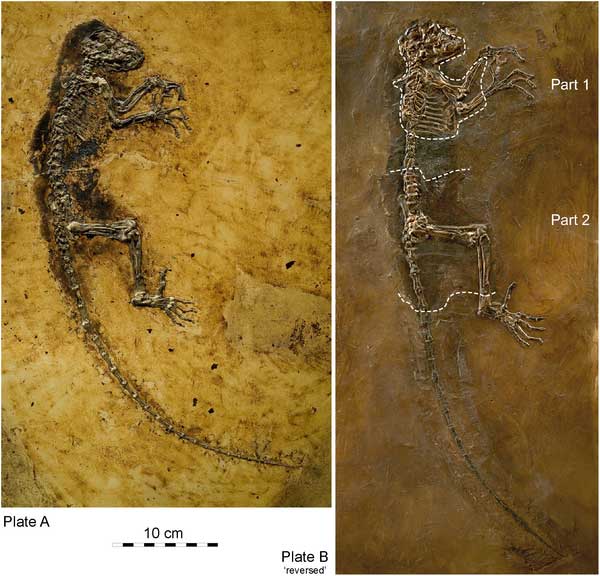Unveiled ‘Holy Grail’ Fossil Gets Celebrity Treatment

NEW YORK — Dozens of New York City reporters swarmed today around a brightly lit specimen case at a local museum, pushing and craning their necks to get a peek inside.
The focus of so much attention looked like a diminutive monkey skeleton. In fact, it was a preserved fossil of a small lemur-like creature from 47 million years ago.
Scientists unveiled the fossil with much pomp and circumstance at the American Museum of Natural History, where even New York's Mayor Michael Bloomberg was on hand to extol the discovery. In the big glass case, the fossilized creature lay on its side, flattened out and suspended in a block of amber-colored material. Scientists think it was a 9-month-old female, and nicknamed her "Ida."
The fossil has been shrouded in secrecy and its unveiling unfolded more like a Hollywood production than a scientific discovery.
Bloomberg called the finding an "astonishing breakthrough." Others who spoke at the press conference, including three scientists who studied the fossil, used similarly glowing terms to describe it, with one researcher comparing the fossil to the Mona Lisa and the Rosetta stone in terms of historical significance.
"This is like a holy grail for paleontology," said Jørn Hurum, a scientist at the University of Oslo's Natural History Museum who arranged to buy the fossil from private collectors about two years ago. Hurum is co-author of a paper published today in the journal PLoS ONE detailing the finding. "This fossil will probably be pictured in all the text books for the next 100 years," he said.
The skeleton is the best-preserved primate in the fossil record, with 95 percent of the creature's bones still intact, and even the contents of its guts preserved to reveal what it ate before it died. Having such a complete early specimen to study will allow scientists to better understand how primates, including humans, evolved, Hurum said. The jury is still out on that claim.
Sign up for the Live Science daily newsletter now
Get the world’s most fascinating discoveries delivered straight to your inbox.
Hurum and team have been studying the fossil in secret for the past two years, going to great lengths to keep the finding under wraps until they were ready to publicly announce it. The unveiling today coincides not only with the publication of a scientific paper, but also with the release of a new book about the fossil — "The Link," (Little Brown and Company, 2009) — and a documentary also called "The Link" and set to premiere on the History Channel May 25.
"There have been lots of reasons for the security and secrecy surrounding this project," said Anthony Geffen, producer of the new documentary. "The scientists wanted to get on with the research, and then get to that day, which is today, which is incredibly exciting for all of us, when the find could come out."
The fossil, called Darwinius masillae, was on display today at the museum. A replica cast will be installed in the American Museum of Natural History's new exhibition, "Extreme Mammals," which opened to the public May 16.
When asked if the publicity surrounding the fossil was overdone (the History Channel touts the discovery as "the most important find in 47 million years"), Hurum said he didn't think so.
"That's part of getting science out to the public to get attention," he said. "I don't think that's so wrong."
- Evolution's Most Extreme Mammals
- Top 10 Missing Links
- All about Evolution











